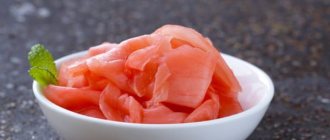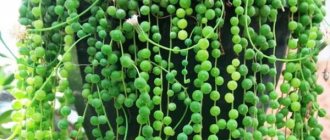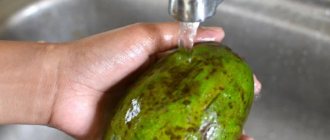Mango is a tropical fruit that can always be bought in Russian supermarkets or food markets. The name is translated from Sanskrit as “great fruit”, and in its homeland in Southeast Asia it is called the “Asian apple”. In order not to be disappointed in this exotic fruit, you need to know the rules of how to choose a mango.
Delicious tropical fruit - mango.
How to choose the right mango in the store
There are more than 300 varieties of this fruit. They vary in peel color, size and shape. Therefore, when choosing, you should not focus solely on these indicators.
A small green fruit may be more ripe and juicy than a red one. It all depends on the variety.
Average characteristics indicating mango ripeness:
- Diameter about 10 cm.
- The fruit should weigh 200-300 g.
- Rounded elongated shape.
To the touch
Ripe fresh fruit should be smooth, elastic and dense. You should not buy flabby, limp fruit whose skin has folds or cracks.
You can check by pressing on the peel. If, when pressed, the depression quickly disappears, regaining its former shape, then the fruit is fresh. If the deformation remains, this indicates that the fruit has been stored for a long time and has already begun to deteriorate and lose its taste and nutritional properties.
At the same time, it is not recommended to buy mangoes that are too hard. Rigidity indicates that it is not yet fully matured.
Peel condition
You should not pay attention to color when choosing a fruit. On store shelves, various varieties can be presented, characterized by one or another shade.
The main indicator of quality is an even, smooth peel without damage. No cracks, punctures or bruise marks are allowed.
In this way, pathogenic bacteria can penetrate inside the fruit, which will lead to rapid spoilage of the fruit and can negatively affect human health.
The presence of small dark spots is considered normal. These marks indicate that the fruit is ripe and ready to eat.
A ripe mango should have smooth skin.
By aroma
Ripe, not overripe fruit has a pleasant fresh aroma. It is most saturated in the area of the stalk. The smell of the fruit may resemble peach, rose, melon, apricot, citrus or pine.
Lack of aroma is a bad sign. This indicates that the fruit is immature and it will take a lot of time for it to reach its condition.
If the mango smells of alcohol or acid, this indicates that the fruit is overripe and has begun the fermentation process.
What should the pulp of an Asian apple be like?
The pulp should be bright yellow. Possible orange or reddish tint depending on the variety. The color should be uniform and not differ in different parts of the fruit. The pulp of a ripe mango is soft and juicy, but at the same time quite elastic, not loose and does not separate into fibers.
The color of mango pulp depends on the variety.
How to distinguish ripe from unripe
You can distinguish a ripe fruit from an unripe one according to certain criteria:
- The smell of ripe mango is rich and fruity. An overripe fruit smells like alcohol, but an unripe fruit has no smell.
- The mango should be pliable and elastic. If the fruit is too soft, it means it is overripe; if it is not compressed at all, it is not ripe.
- A high-quality and moderately ripe fruit has a round shape and a smooth surface without wrinkles. The presence of dark spots on the peel indicates the ripeness of the mango. Underripeness is indicated by the hardness of the skin, and damage in the form of cracks indicates overripeness of the fruit.
Unripe mango and which fruit you should not buy
You should approach the choice of mango carefully and responsibly so as not to bring home a fruit that is unsuitable for food.
Criteria characterizing a bad fruit:
- A wrinkled peel indicates that the fruit was picked from the tree too early and did not have time to ripen.
- A soft surface with dents is a sign of an overripe, stale fruit.
- Wet and sticky fruit is also not worth buying. Juice on the surface indicates damage to the peel, which means bacteria that could cause poisoning could get inside.
Particular attention should be paid to mangoes, which are sold in supermarkets at discounted prices. This may indicate that the fruit has begun to deteriorate and sellers are thus striving to sell low-quality goods as quickly as possible.
You should not buy an unripe Asian apple.
Tips for choosing
Before buying a mango in the supermarket, take the fruit in your hand and examine it carefully. Never buy the first fruit you come across or products on sale: there is a chance of running into a “delay.” Ripe fruit can always be distinguished by obvious signs:
- it has a pleasant subtle aroma emanating from the skin;
- When you press your fingers on the pulp, you feel elasticity. The fingers should not fall inside, but the flesh should not be hard;
- There should be no damage or cracks on the skin. The skin is uniform and smooth.
Many people mistakenly believe that a ripe mango should only have an orange color. This is not entirely true. The fruit can be yellow, green, red in color - its color depends on the variety.
Interesting!
On the shelves of Russian stores there are most often mangoes brought from India, China and Thailand.
Methods for ripening the fetus at home
If you accidentally bought an unripe hard fruit, do not be upset. It can be matured at home. Ripening under normal conditions can take up to a week, but this process can be significantly accelerated.
In paper
If you wrap a mango in newspaper, parchment or a paper bag and leave it at room temperature overnight, there is a chance that the fruit will ripen by morning. This happens due to the fact that under such conditions the release of ethylene is accelerated, which affects the ripening process.
You don't need to wrap the mango too tightly. Air must penetrate under the layer of paper. Otherwise, a fungus may develop, triggering the rotting process.
Ripening in a paper bag.
In rice
This method is rooted in the centuries-old history of India. If you place unripe fruit in rice, ripening will occur much faster. This also happens due to the release of ethylene. It is important to ensure that the rice is fresh and dry. The ingress of moisture, even in small quantities, can lead to product spoilage.
Do not forget to check the condition of the mango every 6 hours, because... under these conditions, there is a risk of rapid overripening of the fetus.
Ripening in rice.
In a dark place
If you put the mango in a dark place, the ripening process will take place in a shorter time than in the light. A closet or drawer that is rarely used during the day is suitable for this purpose. It is important that there are no products or other substances with a strong odor inside, because the mango can absorb it.
Video
We invite you to watch a video about how to choose the right tropical fruit in the store:
A young housewife, she is immersed in raising children and running a household. Like a mother, she can quickly figure out what to do with her child, like a wife, she can cook a delicious three-course meal, like a housewife, she can create coziness and comfort in the house. I’m glad to share with readers life hacks that can make household work easier and save time for your favorite work and travel.
Found a mistake? Select the text with the mouse and click:
Stretch ceilings made of PVC film can withstand from 70 to 120 liters of water per 1 m2 of their area (depending on the size of the ceiling, the degree of its tension and the quality of the film). So you don’t have to worry about leaks from neighbors above.
Fresh lemon is not only suitable for tea: clean dirt from the surface of an acrylic bath by rubbing with half a cut citrus, or quickly wash the microwave by placing a container of water and lemon slices in it for 8-10 minutes at maximum power. The softened dirt can simply be wiped off with a sponge.
Threads made of gold and silver, which were used to embroider clothes in the old days, are called gimp. To obtain them, the metal wire was pulled for a long time with pliers to the required fineness. This is where the expression “to drag out the rigmarole” came from - “to do long, monotonous work” or “to delay the completion of a task.”
The habit of using an automatic washing machine “sparingly” can lead to the appearance of an unpleasant odor in it. Washing at temperatures below 60℃ and short rinses allow fungi and bacteria from dirty clothes to remain on internal surfaces and actively multiply.
If your favorite things show the first signs of gestation in the form of untidy pellets, you can get rid of them using a special machine - a shaver. It quickly and effectively shaves off clumps of fabric fibers and returns things to their proper appearance.
Before removing various stains from clothing, you need to find out how safe the selected solvent is for the fabric itself. It is applied in a small amount to an inconspicuous area of the item from the inside out for 5-10 minutes. If the material retains its structure and color, you can move on to stains.
The dishwasher cleans more than just plates and cups. You can load it with plastic toys, glass lamp shades and even dirty vegetables, such as potatoes, but only without using detergents.
There are special traps to combat moths. The sticky layer with which they are covered contains female pheromones that attract males. By sticking to the trap, they are eliminated from the reproduction process, which leads to a decrease in the moth population.
The easiest way to remove scale and carbon deposits from the soleplate of the iron is with table salt. Pour a thick layer of salt onto the paper, heat the iron to maximum and run the iron over the salt bed several times, applying light pressure.
Stretch ceilings made of PVC film can withstand from 70 to 120 liters of water per 1 m2 of their area (depending on the size of the ceiling, the degree of its tension and the quality of the film). So you don’t have to worry about leaks from neighbors above.
Mango peeling
Mango peel differs in density and texture from the surface of familiar fruits. It is not separated from the fruit on its own, but is peeled off along with the pulp using a knife. And the bone, in turn, is tightly connected to the edible part with fibers.
An inexperienced buyer may have difficulty cutting. Therefore, in order to do everything correctly, it is enough to follow some simple tips.
Peeling
The method of peeling depends on the degree of ripeness of the fruit:
- Slightly unripe fruit, dense and elastic. The best tool for peeling this mango is a potato peeler. Its mechanism does not allow cutting off a lot of pulp. You can also use a knife, but you need to work with it carefully. After peeling the mango, you can cut it into pieces, cutting it in a circle around the pit.
- Ripe fruit, soft and juicy. In this case, you need to resort to the following method: stand the mango vertically and cut it into 2 halves along the pit. After this, the pulp is divided into cubes, the peel is turned inward and then the pieces can be easily cut off.
Remove the peel and cut the mango into cubes.
Removing the pit
The pulp from the stone is cut off with a kitchen knife. The pieces must be cut as close to the seed shell as possible so that there is not a lot of pulp left on it.
Mango knife.
Ways to eat unripe mango
Green mango is used in Asian cuisine as a spicy and specific component of some dishes. It is used to make the Thai Yam Mamuang salad, in which the mango is chopped into long oblong pieces and topped with a sweet and sour sauce. In the Philippines, it is common to eat green mango with shrimp sauce. Unripe mangoes are used to make side dishes and added to various soups.
Mango is an amazing fruit. If you salt it, it will become sweeter. This is due to the presence of starch in the fruit, which enters into a chemical reaction with sodium chloride, forming sugar.
Mangoes can be consumed either with the peel or peeled and cut into cubes.
Note! It is advised not to eat the pulp near the pit, as it is quite fibrous.
Peeling a mango is very easy. Without removing the peel, you can make two longitudinal cuts, turn all three parts inside out and cut into cubes, after which the pulp will fall off on its own.
Rules for storing mangoes
Mangoes do not store well at home. It is recommended to eat the fruit within 2 days from the date of purchase. Otherwise, its taste and nutritional properties may deteriorate.
In a refrigerator
It makes sense to store only ripe fruits in the refrigerator. If the fruit is not yet fully ripe, it should be left at room temperature. It is worth considering that the plant is tropical and is accustomed to high temperatures.
Storing fruit in the refrigerator.
Cut fruit
Peeled and cut mangoes can only be kept in the refrigerator. It is better to eat it immediately, maximum during the day. After a day, the process of decay begins, which is fraught with poisoning.
Sliced fruit should be eaten during the day and kept refrigerated.
Frozen storage
Freezing is not the best way to store mangoes. Low temperatures partially destroy the vitamins and fatty acids that this fruit is so rich in. But there is no other way to preserve it for a long time.
After defrosting, this fruit retains its structure quite well, without becoming soft and sticky, as many people think. In addition, its taste also remains almost the same.
Frozen mangoes should be stored pitted and peeled, cut into small pieces.
- For freezing, the fruit is prepared, peeled and cut.
- Then the pieces are laid out on a plate or board, covered with film and frozen.
- Afterwards, when the pieces are well frozen, they are transferred to a plastic container with a lid or bag.
- The bag is tied tightly, trying to create a vacuum, and placed back in the freezer for long-term storage.
The storage temperature of mangoes in the freezer should always be between -24°C and -18°C. The fruit will remain in this state for about 3 months.
In general, freezing mangoes is not advisable.
How to eat mango
Mango contains many vitamins and minerals necessary for the proper functioning of all human systems and organs. It can be consumed either fresh or as part of dishes or drinks.
Raw
Fresh mango is a great snack or dessert option. This delicious, aromatic exotic fruit will please any gourmet.
You can eat both ripe and slightly unripe fruits. The latter have a denser consistency and have a sour taste.
Mango as one of the snack options.
In drinks
Mangoes can be used to prepare various soft drinks that will appeal to both adults and children, such as milkshakes, smoothies or compotes. You can also squeeze juice and pulp from these fruits.
When preparing various dishes
Options for dishes where you can add mango:
- For hot meat or fish dishes.
- Into baking.
- In yogurt or ice cream.
- Include in sauce.
- Use as a salad ingredient.
- Make jam or jam.
Features of green mango varieties
Green or salad mango has white flesh that is very firm to the touch. The taste of green mango is sour and slightly bitter. Eating fruit without special sauce and spices is not very pleasant. Asians consume it after adding salt and pepper, which turns the fruit into a spicy and unique dish. Green mangoes contain a lot of starch, which turns into sugar after ripening and makes the fruit sweet.
Positive traits
The green variety of mango, like other varieties of fruit, has a rich composition and is recommended as a healthy product. This type of mango contains vitamin C, several times more than lemon. Thanks to this, the fruit helps with colds. Vitamin A contained in the tropical fruit improves vision, and vitamin B6 strengthens the body, has a positive effect on the nervous system and helps overcome stress.
Mango helps neutralize the harmful effects of free radicals, promotes normal functioning of the brain and digestive tract, stabilizes the intestinal microflora, and activates the removal of waste and toxins from the body.
Green mango contains pectin, thanks to which the fruit prevents the development of atherosclerosis, reduces the level of bad cholesterol and blood sugar and is used as a means of weight loss for diabetes. Mango fruits strengthen the walls of blood vessels, help eliminate inflammation and allergy symptoms. Due to its high potassium content, the fruit helps stabilize blood pressure and normalize important metabolic processes.
Green mango has a positive effect on the skeletal system and accelerates regeneration. The fruit is often used as a preventative against cancer, in particular against prostate and breast cancer.
Flaws
There are no particular disadvantages to a tropical fruit with a beneficial composition. However, it is not recommended to eat more than two unripe fruits per day. You need to consume any type of mango in small quantities, checking the body’s reaction. If there is no individual intolerance, you can gradually increase the portions.
Important! Giving mango to children under three years of age is not recommended, as there is a risk of an allergic reaction.
Combining mangoes with alcoholic beverages is prohibited. You can drink alcohol only 2-3 hours after eating the fruit.
Green mango is not recommended for people with digestive problems, people with sensitive mucous membranes and people prone to allergic reactions.











